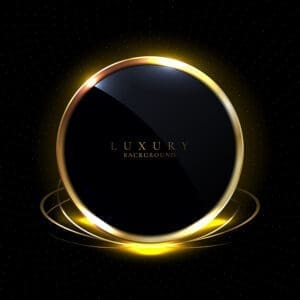 Are you thinking of hiring aÊpublic relations (PR)Êagency to publicize your company, product or service? Or considering launching your own DIY PR campaign? If so, it is very important that you are familiar with the basic PR terminology so that you can create, or work effectively with the agency that will create the best visibility campaign possible.
Are you thinking of hiring aÊpublic relations (PR)Êagency to publicize your company, product or service? Or considering launching your own DIY PR campaign? If so, it is very important that you are familiar with the basic PR terminology so that you can create, or work effectively with the agency that will create the best visibility campaign possible.
So, as a quick PR 101 lesson, here are the most common PR terms that you will need to know to get started:
Objective Ð The objective of a PR campaign is the outcome that you would like to see accomplished. However, a PR objective should have very specific, quantifiable objectives, as this will make it easier for you to evaluate the results of your PR campaign both throughout and at the end of the campaign. Your objectives should also mention a specific time frame in which you would like to be able to accomplish your objective. For example, a good objective could be: ÒIncrease awareness of our solution by 10 per centÊwith potential clients in North America in the first quarter.Ó
Strategy Ð A strategy is an actionable plan that you will undertake to achieve your objectives. Typically, strategies will cover either three- or six-months in a single document and will include a detailed daily, weekly and/or monthly breakdown of campaigns and activities used to accomplish your overall objectives.
We generally do not recommend creating a strategy that covers more than six months at a time, as the market may completely change during that time, which would also change your objectives and strategy. If you do decide that you need a long-term strategy document, I would recommend outlining specific, day-to-day actions including pitch angles/topics, etc. for the first three months of the strategy, a more general strategy for months four through six, and then very high-level strategy for months seven through twelve.
Campaign Ð A PR campaign is a pre-determined set of activities that are planned over a specific period of time to accomplish a specific goal. For example, you could create a three-month strategy to launch a new product, with the goal of raising awareness of the product and increasing demo requests. Note that there may be multiple campaigns within a single strategy. For example, you could have one campaign to introduce your company to media for the first time, another that is about a new product launch andÊanother that communicates clients’ results in a case study, all as part of one six-month strategy document.Ê
Tactic Ð Tactics are the specific, day-to-day activities that you will undertake as part of your campaign, which accomplish the objectives laid out in your strategy document; i.e. distributing a press release announcing a new product. Here’s a quick analogy from a very different industry and scenario that I think will help give you a stronger grasp of these first four terms:
In our example, your ÒobjectiveÓ is to build a new house in the next six months. The ÒstrategyÓ is the architectural plans that you have drawn up to design the house and plan the best way for construction to be undertaken.ÊThe ÒcampaignsÓ are the specific elements within construction, all of which make up your house. For example, electricity, plumbing and interior design could all be considered individual campaigns. Finally, the ÒtacticsÓ are the individual bricks, stones and/or pieces of wood that are laid to build the house.
As you can see from this example, each is a very important part of the safe construction of your new house; the same applies for PR, as each element makes up the building blocks of a successful PR campaign.
AngleÊÐ In PR, the angle or the hook is the story that you are trying to communicate to your publics via your media pitch. A strong angle is what will catch the journalist’s attention and convince them to write an article about your company, product or service. When developing your story angles, don’t forget that it must be newsworthy and timely for it to be considered as a potential story by journalists.ÊÊ
Message – The specific information/talking points that you’re want your intended audience to know, think or feel about your company and product/service. Your message is what is being communicated by your PR outreach.
B2B (business-to-business) media outlets (a.k.a. trade media outlets) – Trade media outlets are read by people who work in the hospitality industry and primarily cover articles that offer expert advice on how to solve common operational problems or discuss trends and news that would be of specific interested to those who work within the industry. This is the perfect target media audience for vendors who are trying to sell their product or service to hotels, as it means that your messaging will be read by potential customers.
B2C (business-to-consumer) media outlets Ð B2C media outlets are typically read by consumers (a.k.a. the average joe) and will cover topics that would be of interest to the general public. In other words, they do not offer information related to a specific industry or business. This type of media is most useful for B2C companies, like hotels, who are looking to reach potential guests with their PR messaging to convince them to book with their property on an upcoming trip.
Now that you have a good understanding of these important PR terms, you can create your own PR strategy and start on your company’s media outreach. Soon after that, you will be celebrating the many media placements that you were able to secure for your company! If you need more tips to DIY PR, download JLNPR’s free guide: ÒHow to Use PR to Boost Sales Ð Without Blowing Your BudgetÓ or read my previous eHotelier articles. If you need help with your company’s PR outreach, feel free to contact me at jenn@jlnpr.com for more information and a free quote.
By Jennifer Nagy, President of JLNPR Inc.
About JLNPR Inc.
 JLNPR Inc. is a full-service public relations and marketing agency that lives and breathes all facets of the travel technology industry. From online travel agencies to revenue management systems, tablet-based aviation automation solutions to IFE technology, hotels to airlines and everything in between, JLNPR uses our knowledge and experience to get your B2B travel technology company noticed by media, influencers and potential customers Ð and whenever possible, without the overused, often abused press release. In addition to traditional media relations outreach, we also ghost-write exciting, informational copy that will be published (in our client’s name) by top hotel industry media outlets Ð in order to increase your company’s visibility with potential customers, boost brand awareness and increase sales. To learn how to do your own PR for your company, download JLNPR’s free guide: How to Use Public Relations to Boost Your Sales – Without Blowing Your Budget. To find out more about JLNPR (including our services and out-of-the-box philosophy on press releases), please visit www.jlnpr.com.
JLNPR Inc. is a full-service public relations and marketing agency that lives and breathes all facets of the travel technology industry. From online travel agencies to revenue management systems, tablet-based aviation automation solutions to IFE technology, hotels to airlines and everything in between, JLNPR uses our knowledge and experience to get your B2B travel technology company noticed by media, influencers and potential customers Ð and whenever possible, without the overused, often abused press release. In addition to traditional media relations outreach, we also ghost-write exciting, informational copy that will be published (in our client’s name) by top hotel industry media outlets Ð in order to increase your company’s visibility with potential customers, boost brand awareness and increase sales. To learn how to do your own PR for your company, download JLNPR’s free guide: How to Use Public Relations to Boost Your Sales – Without Blowing Your Budget. To find out more about JLNPR (including our services and out-of-the-box philosophy on press releases), please visit www.jlnpr.com.



















